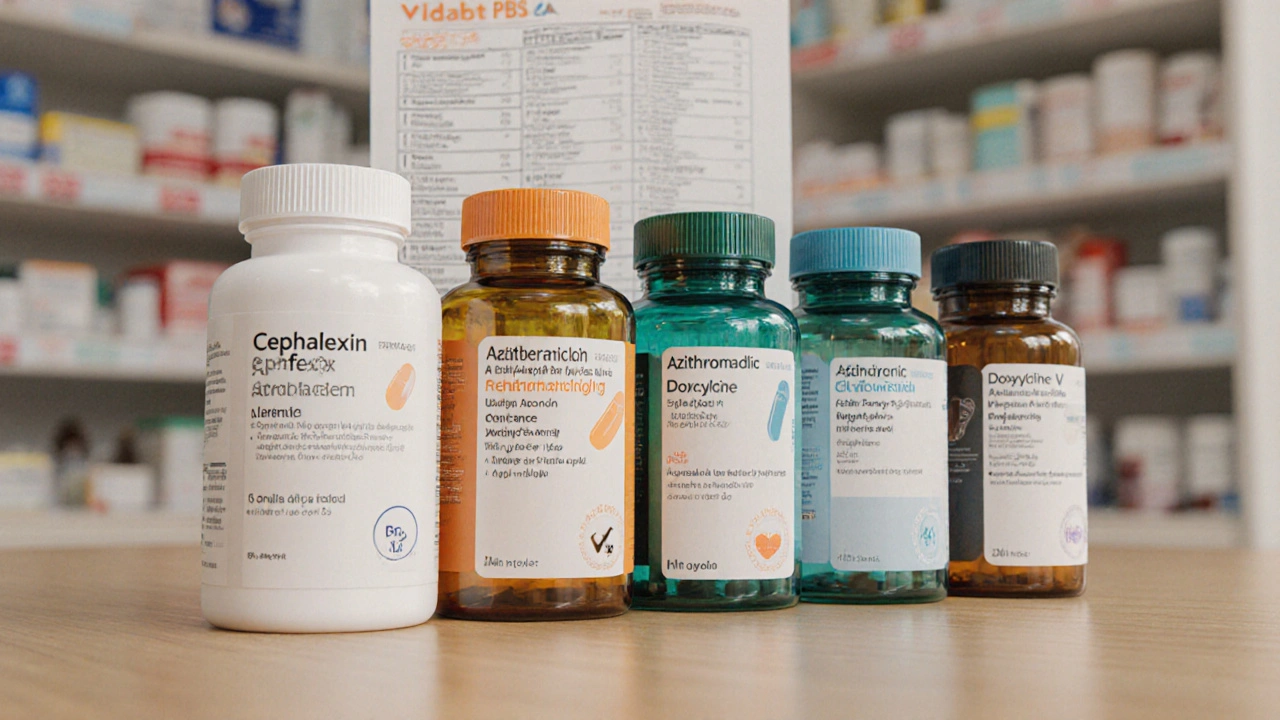Compare Cephalexin: Detailed Guide
When you compare cephalexin, you’re examining a first‑generation cephalosporin used for skin, bone and urinary tract infections. Also known as Cephalexin, it offers good activity against Gram‑positive bacteria while keeping the side‑effect profile modest. This opening sets the stage for a practical look at how cephalexin stacks up against its peers.
Any discussion about cephalexin needs a broader view of Antibiotics, medicines that kill or stop the growth of bacteria. Antibiotics vary by generation, spectrum, dosing frequency and cost. Understanding where cephalexin sits in this landscape helps you decide when it’s the right choice and when another class might be better.
One close cousin is Cefadroxil, another first‑generation cephalosporin marketed as Duricef. Both share a similar bacterial coverage, but Cefadroxil often comes in 500 mg tablets and may be preferred for patients who need once‑daily dosing. Comparing dosing schedules, food interactions and price points between Cephalexin and Cefadroxil gives a clearer picture of convenience versus cost.
Another staple in primary‑care prescribing is Amoxicillin, a penicillin‑type antibiotic prized for its oral bioavailability. While Amoxicillin shines against many respiratory pathogens, its activity against Staphylococcus aureus is limited compared with Cephalexin. Side‑effect differences, such as higher rates of GI upset with Amoxicillin, also factor into the decision tree when you compare cephalexin with this penicillin.
Effective drug comparison relies on three core attributes: spectrum of activity, safety profile, and economic considerations. For cephalexin, the spectrum includes Staphylococcus, Streptococcus and some Gram‑negative rods. Safety-wise, allergic reactions are the main concern, especially in patients with penicillin allergy cross‑reactivity. Economically, generic cephalexin often undercuts brand‑name alternatives, making it a budget‑friendly option for many health systems.
Clinical scenarios dictate which attribute takes priority. In treating uncomplicated skin infections, a broad spectrum and low cost may win out, favoring cephalexin. For dental abscesses where anaerobes dominate, a different class like metronidazole might be added, showing how a comparison must account for infection type. This context shows the practical side of choosing the right antibiotic.
Side‑effects deserve a dedicated look because they can sway patient adherence. Cephalexin’s most common adverse events are mild gastrointestinal issues and occasional rash. Compared with Cefadroxil, the incidence of diarrhea is similar, but Cefadroxil may cause a slightly higher rate of dizziness in older adults. Knowing these nuances helps clinicians counsel patients effectively when they compare cephalexin with other options.
When cephalexin isn’t suitable—say, in severe renal impairment or a known cephalosporin allergy—alternatives such as clindamycin or a fluoroquinolone become relevant. Each alternative carries its own risk‑benefit profile, from tendon rupture with fluoroquinolones to Clostridioides difficile risk with clindamycin. Mapping these alternatives back to the three core attributes creates a decision matrix that can be used at the bedside.
What You’ll Find Below
The articles that follow dive deep into specific drug‑to‑drug comparisons, pricing insights and practical tips for buying generics safely. From Zyrtec vs generic antihistamines to detailed looks at Digoxin versus newer heart meds, the collection mirrors the structured approach we’ve just outlined for cephalexin. Browse the list to see how each comparison applies the same principles of spectrum, safety and cost.
Armed with this overview, you’re ready to explore the detailed posts below, each offering a focused look at how cephalexin and its peers measure up in real‑world use. Happy reading!
